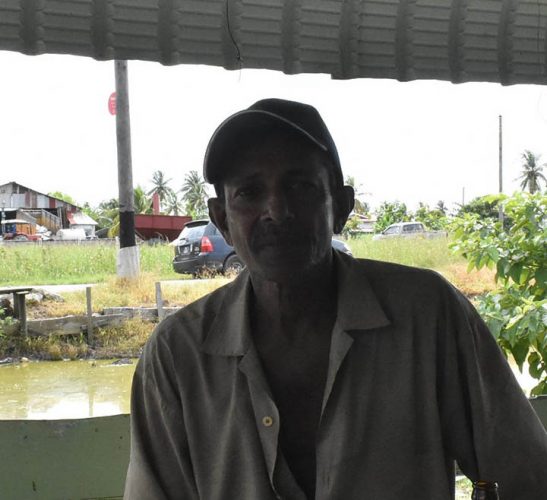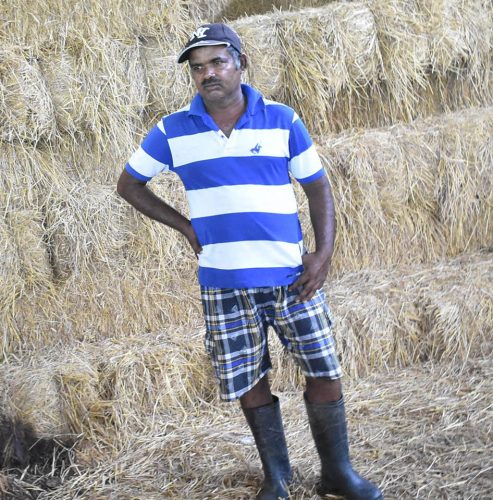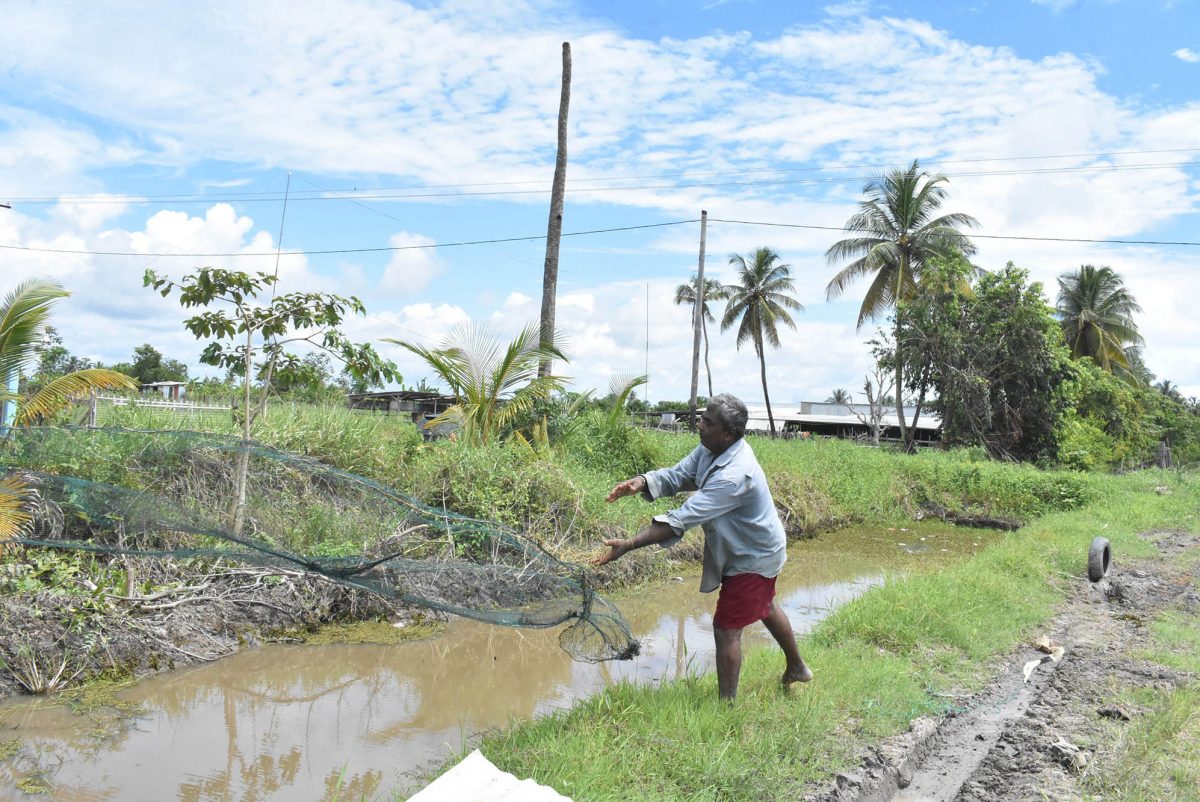When we went in search of De Hoop, Mahaica rice farmer Moorlia Ganschiana just over a week ago, we were told that he had gone fishing. We found him eventually, expertly casting his net into the canal adjacent to his flooded rice field. There appeared to be no intent behind his pursuit. Rather, it seemed that he was trying to put the flooding and its effects behind him. In fact, he appeared to have already resigned himself to the losses which the rains had inflicted on his rice crop.
Moorlia agreed to talk with us. Understandably, there were things on his mind … like the $300,000 he had to “fork out” to meet the cost of hiring an excavator to de-silt the canal that runs adjacent to his rice field. After that, he had spent another five days, with the aid of a tractor, draining the land. These were not costs that he had initially factored into his envisaged financial outlay and he knew that somewhere along the line the impact of the flood would kick in, impacting on his savings. The use of the tractor had meant further expenditure of around three hundred gallons of fuel. He wondered aloud as to whether there was no provision through which he could recoup at least some of that cost from government.

Just before the rains came Moorlia had administered the first ‘dose’ of urea to his fifty-day old rice crop. He told us that the second ‘dose’ should have already been administered. He had planted early in May in anticipation of harvesting in August. Staring at the flooded field he surmised that he might still be able to save some of the crop.
His bigger worry had to do with just how much paddy he would retrieve and the nexus between the quality of what he might retrieve and the price at the mill.
The floods of 2021 have been a kind of déjà vu for Moorlia. This was the second time that he had seen so much water on the land. The first time was in 2005.
According to Moorlia there are about five rice mills in the community. You can sell your paddy to any of them and the millers pay promptly.

The millers also offer credit that can come in the form of fuel and/or fertiliser. When the paddy is brought to the mill for processing, the payments to the farmers exclude that which is owing to the millers.
After he had exhausted his inclination to deal with the tragedy of his rice crop, he began to tell us about the vegetables that he cultivates on the perimeter of his rice land. Those too, he said, had been claimed by the floodwaters, after which he fell silent, seemingly unwilling to undertake the whole ‘nine yards’ of conversation on a second set of losses.
We moved on across areas that appeared to be a continuous lake. At Number 10 Village we met with 57-year-old Naitram “Naresh” Ramdular. He too was in the business of cattle and farming. He told us that while he cultivated rice at Number 10 his cattle pasture at Big Biaboo in the Mahaica River.
The rains and the attendant flooding, however, had compelled him to alter his routine. For the time being he would have to forego his rice cultivation pursuits in order to use the field as temporary pasture land for his sixty cows and twenty sheep which he had been in danger of losing to the floods. Already he had lost more than a dozen calves and a number of sheep to the floodwaters. As we spoke he was contemplating the cost of fencing the rice-growing area where he had decided to hold the livestock. The cost of fencing, he estimated, would be around half a million dollars. With the grazing grounds under water he would also have to incur further expenses acquiring bran and molasses.
The loss of livestock resulting from the flooding had meant that cattle prices had risen, however Naresh said that he was not inclined to sell now. He preferred to fatten up his stock and wait for a while longer, perhaps up until December at which time he might part with a few. At this point he appeared to have gotten past the blow of the floods and the losses that they had inflicted and appeared to have adopted a kind of suck-it-up-and-move-on disposition.
Our third cattle and cash crop farmer, Mohan Singh, also resides at Flora Gardens, Mahaica. His cattle in the Mahaica Creek had been threatened by the floodwaters and he had succeeded in moving them to higher ground at De Hoop. He appeared to be more fortunate than the others insofar as he had reaped his crops some time earlier. When the rains came he was in the process of replanting and had made a decision to wait for better weather.
We had met Mohan earlier to talk about his paneer (a type of cheese – see Stabroek Business story of Friday June) venture, which, from all accounts, is doing well. He now has a few reliable markets and his production is increasing. While he is by no means unmindful of the material rewards to be gotten from cattle farming, these days, he has become more attached to the attraction of a diversified business. When we sought to engage him on the issue of the flooding and its impact on his cattle enterprise he appeared far more eager to discuss the dairy dimension to his entrepreneurial pursuits and more particularly the importance of the milk he gets from his cows to the expanded production of paneer. If he was not unmindful of the footprint which the floods had left behind he appeared to be surprisingly optimistic about the future. So much so that he is currently working with the Guyana Livestock and Development Authority on a cattle-breeding initiative that would significantly increase milk production.
We parted company with these three farmers significantly more enlightened on the impact of changing weather patterns of agriculture and the prospects, going forward, for Guyana’s highly touted food-production capabilities in a world where climate change is increasingly making its presence felt. As for the farmers who took time off from contemplating the ‘beating’ that they had taken from this most recent bout of torrential rains and attendant flooding, we view them with a profound sense of admiration for their resoluteness and their determination to emerge from the floodwaters with a determination to soldier on.




